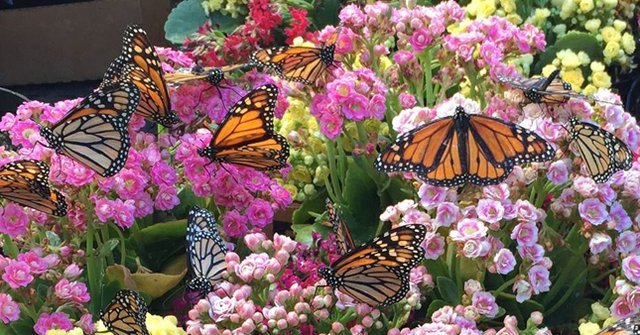The Birds and the Bees
Our ecological system is in trouble. The pollinators are disappearing and if we don’t take action now there will be grave consequences for mankind all around the world. Over 80% of the world’s flowering plants require a pollinator to reproduce. A large portion of the world’s food supply relies on pollinators to aid in the growth of fruits, vegetables, and grains. Pollinators are responsible for one out of every three bites of food you eat. Without pollinators, the world would change drastically.
WHAT IS A POLLINATOR?
Most people think of bees and butterflies when they hear the word pollinator, but those are just two examples. Other pollinators include moths, birds, beetles, bats, flies, and even the wind. Some pollinators may seem like annoying pests but they are all equally important. For example, fly species are general pollinators (they visit many types of plants) but new research shows they prefer plants in the shade and they do a wonderful job pollinating annuals and bulbous flowers.
WHAT CAN YOU DO TO HELP?
The smallest change in your landscape and gardens can make a drastic impact on the local ecological system and aid in the revitalization of pollinators. Instead of using chemical pesticides try implementing an IPM (integrated pest management) program at your home. You can also plant native plants, create a butterfly garden, create a space where bees can nest away from human traffic, and protect grasslands.
WHAT IS IPM?
Integrated Pest Management is an environmentally sensitive approach to pest management. The main idea is that different plants will attract different pollinators. If you are looking to aid pollinators while implementing IPM look no further than lavender. Lavender attracts bees and butterflies but is also a natural mosquito and flea repellant. Other pollinator plants to help in your IPM project can include marigolds, lemongrass, daisy, mint, thyme, and petunias. IPM is a great way to aid pollinators while keeping annoying pests at bay.
BUTTERFLY GARDENS

If you want something that looks and smells good throughout the season, I recommend installing a butterfly garden. A butterfly garden will take some effort on your part such as weeding and dead heading but the results are worth the work. To start a butterfly garden you will need to choose an appropriate area. The area must be sunny as butterflies are cold-blooded animals and need sunlight to become active. You will also want an area that will provide shelter for the butterflies. Choosing the right plants for the area is critical. You will need plants that are hardy to your area and that attract butterflies and caterpillars. Use a wide variety of plants to mimic how plants grow in the wild.
Plants to Consider
- Butterfly Bush
- Viburnum
- Bee Balm
- Salvia
- Mock Orange
- Redbud
- Sunflower
- Coneflower
- Ornamental Grasses
- Honeysuckle
- Milkweed
- Clover
For more information about pollinators visit:
www.missouribotanicalgarden.org
www.epa.gov/safepestcontrol/integrated-pest-management-ipm-principles
